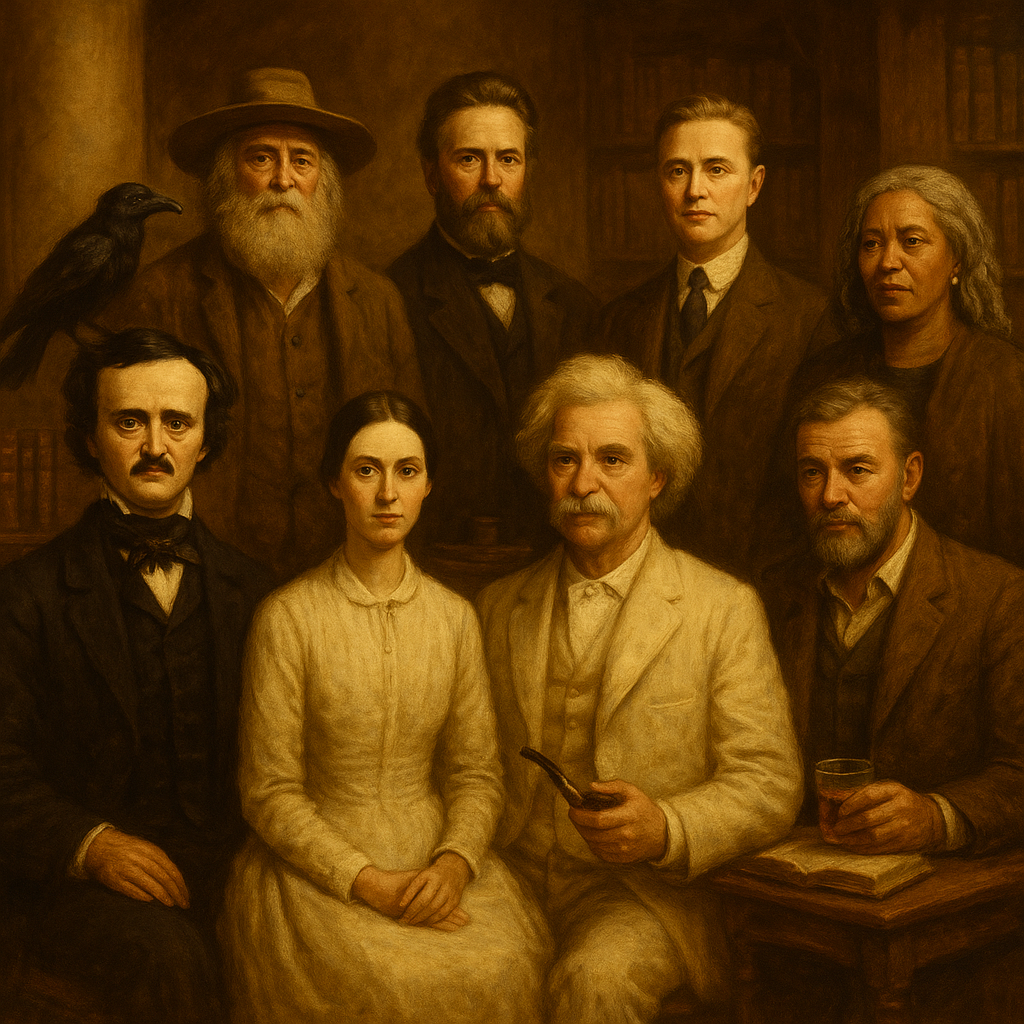Emily Dickinson (1830–1886): The Life and Poetry of Emily Dickinson
Emily Dickinson is one of the most original poets in American literature. Her work is filled with depth, mystery, and insight. This article explores the life and poetry of Emily Dickinson.

Early Life of Emily Dickinson
Emily Dickinson was born on December 10, 1830, in Amherst, Massachusetts. Her family was prominent in the local community. Her father, Edward Dickinson, was a lawyer and politician. She attended Amherst Academy and later Mount Holyoke Female Seminary. However, she returned home after just one year. This decision marked the beginning of her quiet, reclusive life.
Her early life was filled with education, reading, and strong family ties. These factors shaped her poetic voice. From a young age, Emily displayed a deep interest in nature and literature. She started writing poems in her teens. Her fascination with death, immortality, and inner emotions appeared early in her writing.
A Reclusive Lifestyle
The life and poetry of Emily Dickinson cannot be separated from her reclusiveness. By her thirties, she had withdrawn from the outside world. She seldom left her home. She often wore white clothing and avoided visitors. Yet, this isolation allowed her imagination to flourish.
Her inner world became the focus of her poetry. She found beauty in the smallest things. A bird, a drop of dew, or a ray of light could become the center of her verse. Her seclusion helped her create a unique poetic language. She rejected conventional norms and embraced individuality.
Literary Style and Themes
Emily Dickinson’s style is notable for its brevity, slant rhyme, and irregular punctuation. She used dashes, capitalizations, and short lines to express strong emotions. Her poetic structure broke away from tradition. She developed her own grammar of thought.
The life and poetry of Emily Dickinson are known for their rich themes. She explored life, death, immortality, nature, faith, and human emotion. She approached these topics with curiosity and honesty. Her poetry offers a clear window into her soul.
Dickinson’s Interest in Death
Her thoughts about death did not come from fear. Rather, they stemmed from her desire to understand. The life and poetry of Emily Dickinson reflect a deep awareness of life’s fragility. Her reflections on mortality remain relevant and profound.
One of her most famous themes is death. She wrote many poems contemplating the mystery of dying. Yet, she often treated the subject with calmness and acceptance. Sometimes, she imagined death as a kind companion. In other verses, death was a solemn truth.
Relationship with Nature
Nature played a major role in Dickinson’s life and poetry. She saw the natural world as a source of comfort and inspiration. Her poems describe flowers, birds, sunsets, and the changing seasons. These elements reflect her mood and thoughts.
She used nature to illustrate philosophical ideas. A bee might represent hard work. A storm might represent emotional turmoil. Her use of imagery made her poems vivid and engaging. Readers often feel a deep connection to nature through her verses.
Religious Beliefs and Doubts
Raised in a religious family, Dickinson had early exposure to Christian teachings. However, she often questioned religious dogma. Her poems explore spiritual doubt and belief. She challenged traditional views of heaven, God, and salvation.
The life and poetry of Emily Dickinson reveal a personal faith. Her spirituality was quiet and individual. She respected the idea of God but did not accept all doctrines. Her poems often ask questions rather than give answers. This honesty makes her work deeply human.
Personal Relationships and Influence
Emily had close relationships with her family and a few friends. Her letters to Susan Gilbert Dickinson show deep affection. Scholars debate whether their bond was romantic. She also wrote letters to literary figures like Thomas Wentworth Higginson.
Though she avoided public life, she valued deep connections. These relationships influenced her poetry. The life and poetry of Emily Dickinson show that personal feelings shaped her work. Emotional depth is a hallmark of her verse.
Manuscripts and Publication
Emily Dickinson wrote nearly 1,800 poems. Yet, only a few were published during her lifetime. Editors altered them to fit standard forms. This disappointed Dickinson. She preferred to keep her work private.
After her death in 1886, her poems were discovered by her family. Her sister Lavinia played a major role in publishing them. The posthumous publication revealed her genius to the world. Today, her original versions are celebrated for their authenticity.
Legacy and Influence
The life and poetry of Emily Dickinson have left a lasting legacy. She inspired generations of poets. Writers admire her courage to defy norms. Her originality set the stage for modern American poetry.
Scholars and readers continue to explore her work. Her poems are studied in schools and universities. They offer insights into the human condition. Dickinson’s legacy proves that silence and solitude can produce great art.
Conclusion: A Unique Voice in American Literature
Emily Dickinson remains a towering figure in literature. Her reclusive life and profound poetry have made her unforgettable. The life and poetry of Emily Dickinson reflect a mind that valued truth, beauty, and personal freedom.
She wrote in a style that was ahead of her time. Her themes still resonate with readers today. Her contribution to poetry is undeniable. Dickinson’s work is a treasure of emotional depth and philosophical inquiry.
Her poems show how one person, living in solitude, can touch the hearts of many. Her quiet voice has echoed through time. The life and poetry of Emily Dickinson will continue to inspire.
The Pardoner in The General Prologue: https://englishlitnotes.com/2025/05/26/pardoner-in-the-canterbury-tales/
Henry David Thoreau: https://americanlit.englishlitnotes.com/henry-david-thoreau/
Letter to Uncle Thanking for a Gift: https://englishwithnaeemullahbutt.com/2025/04/26/letter-to-uncle-thanking-for-gift/
Use of Neither: https://grammarpuzzlesolved.englishlitnotes.com/neither-is-correct/
Visit Google to search for English literature topics, authors, and study resources:https://www.google.com
Discover more from Welcome to My Site of American Literature
Subscribe to get the latest posts sent to your email.
